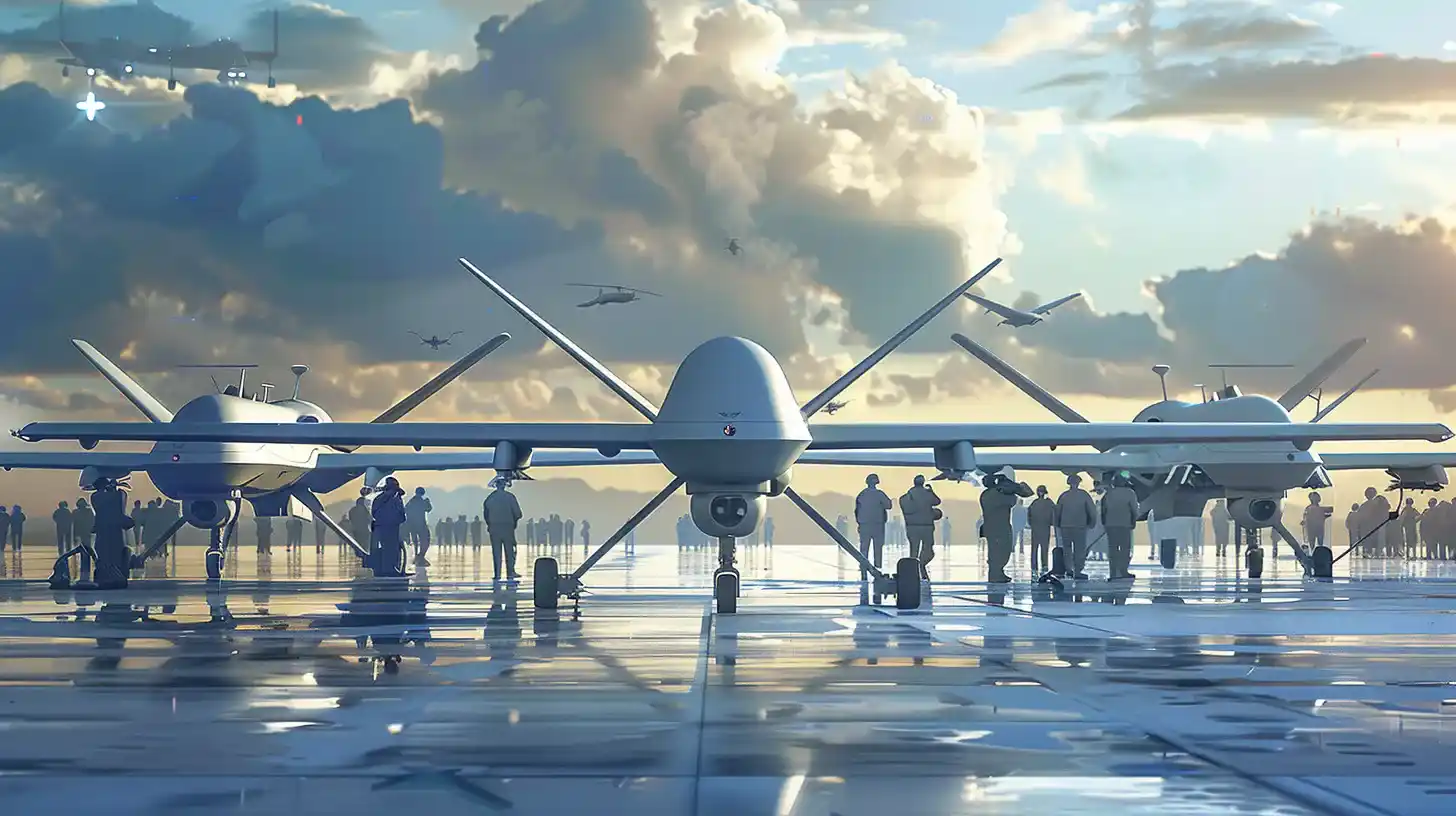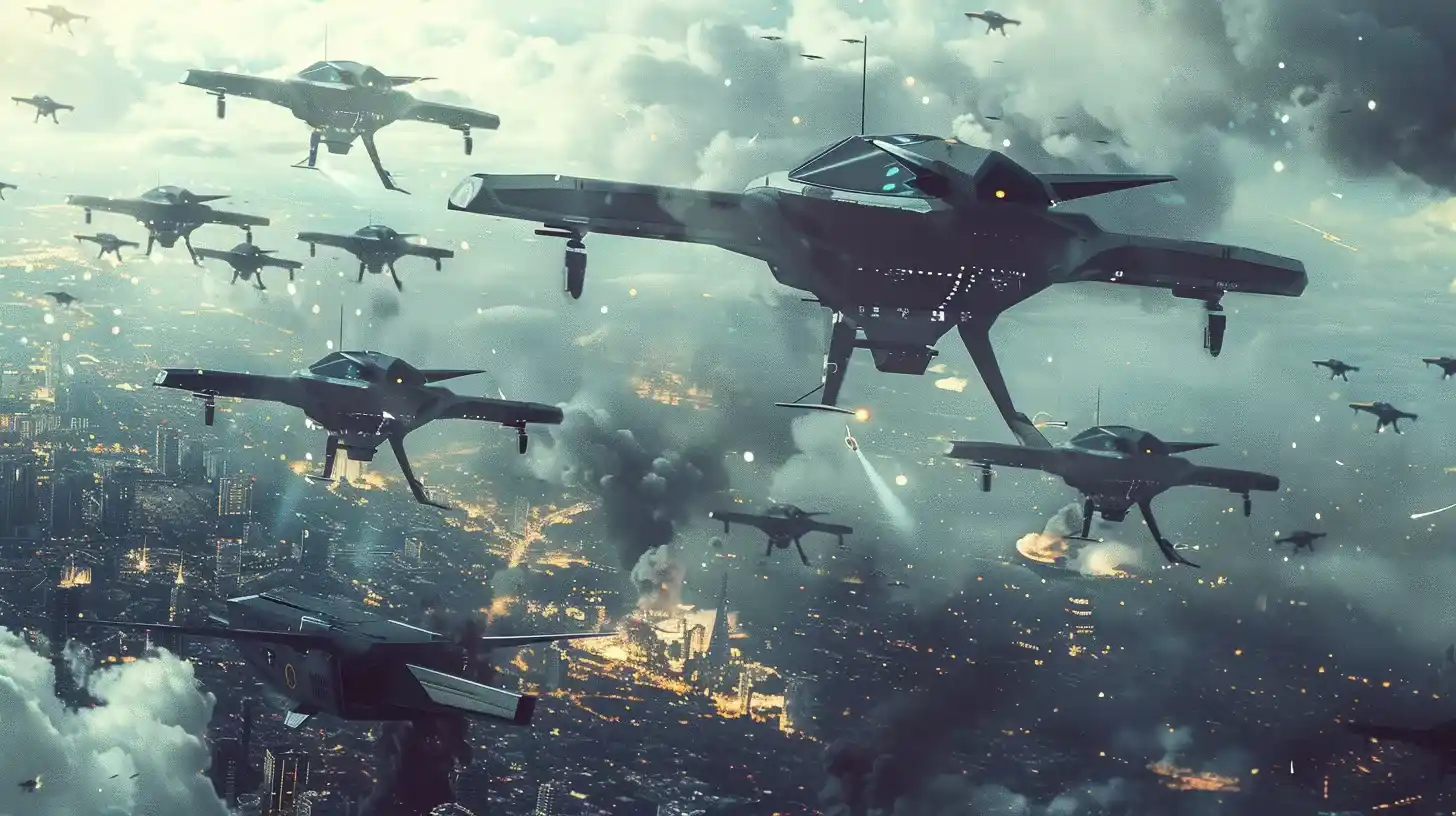Table of Contents
In an ambitious leap toward modernizing its aerial warfare capabilities, the Pentagon has embarked on a significant project to develop new artificial intelligence (AI)-guided aircraft. The initiative, part of a comprehensive $6 billion program, aims to introduce at least 1,000 advanced drones into the U.S. Air Force.
These AI-guided combat drones are designed to operate alongside manned jets, providing crucial support as escorts, scouts, or communication relays. The project underscores a strategic move towards enhancing the U.S.’ aerial dominance with cutting-edge technology.
Revolutionizing Air Combat with AI-Guided Combat Drones
The concept of Collaborative Combat Aircraft (CCA) represents a pivotal shift in military operations, where AI-guided combat Drones and human pilots collaborate to achieve mission objectives. This initiative not only promises to expand the U.S. Air Force’s operational capabilities but also introduces a new dimension of strategic flexibility and force multiplication.
Leading defense contractors, including Boeing, Lockheed Martin, Northrop Grumman, General Atomics, and the innovative newcomer Anduril Industries, have joined the fray, competing for contracts that will shape the future of U.S. air combat.

General Atomics, known for its Reaper and Predator drones, brings a legacy of operational excellence to the table, while Anduril Industries, founded by tech entrepreneur Palmer Luckey in 2017, introduces fresh perspectives and cutting-edge AI applications to military hardware. Despite the competitive nature of the CCA project, many companies remain tight-lipped about their specific offerings, underscoring the high stakes and intense rivalry inherent in defense contracting.
Pioneering Entries and Advanced Capabilities
Boeing’s Ghost Bat, the sole publicly disclosed contender so far, epitomizes the advanced capabilities expected from these AI-guided combat drones. With its impressive range and near-sonic speed, the Ghost Bat is engineered to complement and enhance existing military aircraft, bringing additional tactical awareness and surveillance prowess to the battlefield.
This focus on interoperability and mission extension highlights the strategic intent behind the CCA project: to seamlessly integrate AI innovations into conventional air operations.
Anduril’s Roadrunner, although not officially confirmed for the CCA pitch, showcases the potential of AI to enhance drone versatility and effectiveness. The drone exemplifies a new breed of combat UAVs (Unmanned Aerial Vehicles) capable of vertical take-off and landing, equipped with advanced navigation systems and modular payloads for various mission profiles.
This approach to drone design, emphasizing cost-effectiveness and operational flexibility, mirrors the Pentagon’s broader objectives for the CCA program.
Strategic Impact and Future Directions
The push for AI-guided combat drones aligns with the Pentagon’s vision of overhauling U.S. military innovation, as highlighted by Deputy Secretary of Defense Kathleen Hicks. The emphasis on deploying “small, smart, cheap, and many” autonomous units reflects a strategic pivot towards leveraging technology to ensure tactical and operational superiority.
Such advancements promise not only to enhance the U.S. military’s capabilities but also to redefine the principles of warfare in the digital age.

As companies like General Atomics and Lockheed Martin continue to develop and test their AI technologies, the potential for autonomous collaborative combat missions grows. These efforts, ranging from the creation of digital twins to the integration of AI pilots, signal a transformative period in military aviation.
The ability of these drones to operate autonomously under uncertain conditions, making decisions at critical speeds, underscores the revolutionary impact of AI on combat strategies.
Conclusion
The Pentagon’s investment in AI-guided combat drones marks a significant milestone in the evolution of aerial warfare. As these drones prepare to take to the skies alongside their human counterparts, they herald a new era of combat operations, defined by unprecedented levels of collaboration, intelligence, and flexibility.
With leading defense contractors at the helm, the future of U.S. air superiority appears not only assured but poised for innovative expansion. As the CCA project progresses, it will undoubtedly continue to attract attention and anticipation from both military circles and the defense industry, eager to witness the next chapter in the saga of AI and warfare.